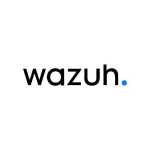What is our primary use case?
We needed a SIEM solution that could integrate with our Microsoft 365 stack. Being a Microsoft product, that was the first SIEM we looked at, and we haven't looked back. We're still growing with the product over the last couple of years. It is phenomenal.
We're mainly focused on the cloud, but one of our selling points is that you can integrate with on-prem. We push to get the Azure Arc implementation done on top of Sentinel so that we can ingest data from your on-prem environment into Azure Monitor, which is then exposed to Sentinel. That's how we drive that integration, but we mainly have the cloud. We have 80% cloud and 20% on-prem.
How has it helped my organization?
The specific focus on entity behavior is where the gold is within Sentinel. The machine learning and AI capabilities that Microsoft already provides within their toolset are exposed through entity behavior analytics. That really is magic. It is something we don't live without. We have specific key metrics we measure against, and this information is very relevant information to our security approach. That's because not everything is an alert and not everything is a threat. In some cases, the anomalous sign or the anomalous behavior is more important than the actual alert coming up and saying that something has been infected. It could be those sign-ins a week before or a month before into a database that you don't always look into that end up being the actual threat. The entity behavior or the overall feature that Sentinel has is absolute gold for us.
In terms of the visibility into threats, because I set up the product, I'm very much aware of the fact that you see what you configure. That's probably a plus in terms of if you have an appetite only for product one, you ingest and you consume only product one. In our company, we have the full E5 solution, and we tend to have a lot of endpoints or metrics that we can pull into one space. So, each and every sub-component, such as Defender for Endpoint, Defender for Identity, and all the incidents end up within Sentinel. It is one spot from where we can manage everything. That works very well for us. We do have small customers with one or two Microsoft solutions, and even third-party solutions, and we can still integrate or expose those product-specific incidents within Sentinel. For me, that's a big plus.
It definitely helps us to prioritize threats across our enterprise. There is not just a clear classification of severity but also the ability to team certain alerts together. It can chain events and bring you a bigger picture to tell you this is something that you need to take care of or look at because it is tied or chained to multiple events or alerts. That ability is again a big plus.
We probably use all of the Microsoft products. We use Azure Active Directory, and we use Defender for pretty much everything, such as Defender for Identity, Defender for Endpoint, Defender for Cloud, and Defender for Cloud Apps. As a senior cloud infrastructure consultant, it is a part of my role to provide or customize and configure these products on behalf of our customers. We have integrated these products for multiple customers. One of my favorite benefits of Sentinel is its integration with the entire stack. I am yet to find a Microsoft product with which it does not integrate well. All of the Microsoft products are fairly simple to integrate with it. Anyone can set up their own environment. It is only third-party products where you tend to have a bit of technicality to configure, but even that is not a difficult process. It is fairly straightforward and easy to follow.
All these solutions work natively together to deliver coordinated detection and response across our environment. Microsoft Defender stack does that quite well. One of the reasons why Microsoft personally favors the Microsoft Defender stack is because of the integration with the rest of the products.
I'm a big fan of the layered approach, and it should be in every environment. Microsoft does a good job of providing you with that layered approach without too much of an oversight or a combination of a bunch of products. They work well individually, and they stack together quite well based on the individual requirements or the needs of each.
We use Microsoft Defender for Cloud. Our footprint in the cloud is limited. We only have two or three customers that fully make use of the product, but it is something that I do make use of and will. We do make use of its bi-directional sync capabilities. Especially within the organization, we have a very small team dedicated to assisting in our cloud-managed servers. If one person has to run around and duplicate these efforts in multiple portals, that wouldn't be an effective use of their time. So, the simple ability to just be in one portal or one place and apply the remediation or the management of an item is a big plus for us.
It allows us to ingest data from our ecosystem. I have found only one or two third-party antivirus products that still don't integrate fully with Sentinel, but for my use case within my own environment, as well as the environments we manage through our inSOC offering, there hasn't been any case or instance I know of where we could not find a solution to ingest necessary logs.
I work with security, and I also work with compliance. On the compliance side, the ability to have an audit trail and all your logs in one central location is important. The data is queryable. The KQL language is not a difficult language to get under. So, for me, having it all in one place and being able to query it and slice the data to what I need to provide or expose is a key feature of a SIEM solution.
It enables us to investigate threats and respond holistically from one place. It is very important, and bidirectional ties into this. We have a small team. So, the following capabilities are critical to our managed solution:
- The ability to hunt from one location or one stream.
- The ability to integrate with multiple sources and data tables for ingestion.
- The ability to expose information from those tables from one stream or portal.
We probably would end up having to hire twice as many people to accomplish what we can do simply by integrating Sentinel with the rest of our product stack.
It helps automate routine tasks and the finding of high-value alerts. Being able to automate routine tasks or routine alerts is a big save for us because our analysts are not bogged down trying to just close alerts in a portal. This freeing up of time alone is a big save for us.
It helps eliminate having to look at multiple dashboards and gives us one XDR dashboard. The workbooks already integrate well with Azure Lighthouse. So, right out the bat, we had that multitenant capability from one dashboard or one screen. It is just absolutely brilliant.
It saves time on a daily basis. For example, as a desktop engineer, if I have to go through 20,000 devices, it would take a long time to go one device at a time. To make sure everything is fine, if I have to log in, upload some logs, do some metrics, log off, and go to the next office, it would take us a good part of a year to be able to work on each of these devices. With Sentinel, once your logs are configured and analytics rules are in place, a simple hunting query could accomplish exactly the same in a month.
Previously, four hours of my day were spent on just dashboards here and there, logging into tenants one time to the next, running the same view in the same portals, and looking through, for example, the alerts for the day or the threats for the day. With Sentinel, all that is in one place. I can just log on with my company-provided credentials, do MFA once, and through a portal with multiple links, seamlessly go through entity after entity. My whole exercise of four hours per day is now probably down to half an hour just because everything is in one place.
It has decreased our time to detection and time to respond. In the past, we would have to get someone to physically log onto a portal once there is an alert, and if that alert was in multiple places or multiple customers, it would mean multiple portals and multiple logins. The ability to manage from one screen and run an effective service has alone saved us 60% of our day.
What is most valuable?
I work with the Microsoft 365 products stack quite a bit, and I'm a big fan of the granularity that the products have. For example, the Defender stack is very focused on endpoints, identities, and so forth. With Sentinel, we have the ability to integrate with each of these components and enhance the view that we would have through the Defender portal. It also gives us the ability to customize our queries and workbooks to provide the solution that we have in mind on behalf of our team to our customers.
The part that was very unexpected was Sentinel's ability to integrate with Azure Lighthouse, which, as a managed services solution provider, gives us the ability to also manage our customers' Sentinel environments or Sentinel workspaces. It is a big plus for us. With its integration with Lighthouse, we get the ability to monitor multiple workspaces from one portal. A lot of the Microsoft Sentinel workbooks already integrate with that capability, and we save countless amounts of money by simply being able to almost immediately realize multitenant capabilities. That alone is a big plus for us. Never mind everything else, such as the security benefits, visibility, and the ability to query the data. They all are great, but the ability to see multiple workspaces is a big money saver and a big time saver for our team.
We offer a managed service where we are geared toward a proactive approach rather than a reactive one. Sentinel obviously covers quite a lot of the proactive approach, but if you engage all of your Microsoft products, especially around the Microsoft endpoint stack, you also gain the ability to manage your vulnerability. For us, gaining the ability to realize a full managed service or managed solution in one product stack has been valuable.
Its threat intelligence helps us prepare for potential threats before they hit and take proactive steps. It highlights items that are not really an alert yet. They are items that are running around in the wild that Microsoft or other threat intelligence providers have picked up and would expose to you through Sentinel by running a query. This ability to integrate with those kinds of signals is a big plus. Security is not only about the alerts but also about what else is going on within your environment and what is going on unnoticed. Threat intelligence helps in highlighting that kind of information.
What needs improvement?
Improvement-wise, I would like to see more integration with third-party solutions or old-school antivirus products that have some kind of logging capability. I wouldn't mind having that exposed within Sentinel. We do have situations where certain companies have bought licensing or have made an investment in a product, and that product will be there for the next two or three years. To be able to view information from those legacy products would be great. We can then better leverage the Sentinel solution and its capabilities. It is being enhanced, and it has been growing day to day. It has gone a long way since it started, but I would like to see some more improvement on the integration with those third parties or old products that some companies still have an investment in.
In terms of additional features, one thing that I was hoping for is now being introduced through Microsoft Defender Threat Intelligence. I believe that is going to be integrated with Sentinel completely. That's what I've been waiting for.
For how long have I used the solution?
I have been working with this solution for close to two years.
What do I think about the stability of the solution?
It is very much stable. We've had one or two issues in the last two years where we had a Microsoft-reported incident, and there were data flow issues, but overall, they are 99.9999% available. We've not had an unrecoverable event across the solution. We've had incidents where users ended up not paying the subscription and the subscription got disabled. It simply required just turning it back on and paying your bill, and you were back up and running. It is quite robust.
What do I think about the scalability of the solution?
It definitely is scalable. It will adapt to your needs. It is really about how much you're willing to spend or what your investment is like. That's basically the only limitation. We've seen customers or deployed to customers with thousands of endpoints across the world, ingesting tons and tons of data. We're talking 200, 300 gigabytes per day, and the product is able to cope with that. It does a great job all the way up there at 200, 300 gigs per day to all the way down to the 10, 20 megs per day. It is really scalable. I am quite a fan of the product.
It is being used at multiple locations and multiple departments, and in our case, multiple companies as well. In terms of user entities, the number is probably close to 40,000 in total across our state. In terms of endpoints, we probably are looking at close to 30,000 endpoints.
How are customer service and support?
I've dealt with Microsoft technical support in the recent past, and I'm overall quite happy with it. Being a big company with big solutions and lots of moving parts, overall, their approach to troubleshooting or fault finding is great. I'm going to give them an eight out of ten. There is always some room for improvement, but they're doing well.
How would you rate customer service and support?
Which solution did I use previously and why did I switch?
We didn't really use a full SIEM solution at the time. We hovered between dashboards and certain portals. We didn't have a SIEM in place. The first solution we looked at was Sentinel, and we fell in love. It does everything we want and everything we need, and we haven't looked back. We're not even looking at any other solutions right now. For us, it is unnecessary. We're very happy with Sentinel and what Sentinel can do.
How was the initial setup?
It is very straightforward. As a service provider, we'd love to be part of that integration or setup. That's where we make our bread and butter. It is simple enough for the average IT enthusiast to get going, but if you do want to get the best out of your product and if you want to start with some customization, reaching out to a service provider or to a specialist does make sense because they have learned a few things on your behalf. Other than that, it is easy enough to get going on your own. It is a very straightforward configuration, and it does make sense. It is easy to follow.
If you already have a subscription in place, you could be fully operational in less than one business day.
What about the implementation team?
For its deployment, it is a one consultant kind of approach. What is important is that everyone from within the company that is part of the decision-making chain is present as part of it. That's because the main pushback is not the implementation of Sentinel, but the connection to it for the data. So, you would have your firewall guys push back and say, "I don't want to give my data to you." You have your Defender guys saying, "No, I don't want to give my data to you." That's more important in terms of the deployment. One person can easily manage the deployment in terms of the workload.
There is some maintenance. There are some daily, monthly, and weekly tasks that we set out for ourselves. It is normally in the form of query updates, workbook updates, or playbook updates. If some schema update has happened to the underlying data, that needs to be deployed within your environment. Microsoft does a great job of alerting you, if you are within the portal, as to what element needs updating. We have 16 customers in total, and we have one person dedicated to maintenance.
What was our ROI?
We could realize its benefits very early from the time of deployment. Probably within the first three months, we realized that this tool was a lot more than just a simple SIEM, SOAR solution.
It has absolutely saved us money. Of course, there is an upfront investment in Sentinel, which has to be kept in mind, but overall, after two years, the return on investment has been absolutely staggering. In security, you don't always have people available 24/7. You don't have people awake at two o'clock in the morning. By deploying Sentinel, we pretty much have a 24/7 AI that's looking at signals, metrics, and alerts coming in, making decisions on those, and applying automated actions. It is like a 24-hour help desk service from a solution that is completely customizable. We have programmatic access to the likes of playbooks to be able to further enhance that capability. The savings on that alone have been astronomical. If we did not have Sentinel, we would have had to double the amount of staff that we have now. There is about a 40% reduction in costs.
What's my experience with pricing, setup cost, and licensing?
I'm not happy with the pricing on the integration with Defender for Endpoint. Defender for Endpoint is log-rich. There is a lot of information coming through, and it is needed information. The price point at which you ingest those logs has made a lot of my customers make the decision to leave that within the Defender stack. The big challenge for me right now is having to query data with the Microsoft Defender API and then querying a similar structure. That's a simple cost decision. If that cost can be brought down, I'm sure more of my clients would be interested in ingesting more of the Defender for Endpoint data, and that alone will obviously drive up ingestion. They are very willing to look at that, but right now, it is at such a price point that it is not cost-effective. Most of them are relying on us to recreate our solution, to integrate with two portals rather than having the data integrator Sentinel. If we can make a way there, it'll be a big one.
Which other solutions did I evaluate?
We have had some assessments where we were asked to do a comparison with the likes of Splunk and other similar tools. What I love about Sentinel is the granularity. You can configure what you need. Whether it just logs from a server or logs from any of the Microsoft solutions, you have the ability to limit data depending on your use or your need. You can couple that with the ability to archive data, as well as retain data, on a set schedule.
Its cost is comparable to the other products that we've had, but we get much more control. If you have a large appetite for security, you can ingest a lot of information right down to a server event type of log. That obviously would be costly, but for ingesting from the Microsoft stack itself, a lot of the key logs are free to use. So, you could get up and running for a very small amount per month or very small investment demand, and then grow your appetite over time, whereas with some of the other solutions, I believe you buy a commitment. So, you are in it for a certain price from the beginning. Whether you consume that, whether you have an appetite for that, or whether there are actual people in your company who can make use of that tool is separate from that commitment. That commitment is upfront, whereas Sentinel is much more granular. You have much more control, and you can grow into a fully-fledged product. You don't need to switch everything on from day one and then run and see what it will cost. You can grow based on your needs, appetite, and budget until you find that sweet spot between what you ingest and what you can afford.
What other advice do I have?
Having worked with the product and knowing the capabilities of the product, it is worth investing in a product that Microsoft has spent a great deal on integrating with the rest of its product stack. Now, we can argue how far along the third-party vendors are in terms of integration with the rest of the security landscape, but if you're a Microsoft house, there is literally no better solution right now in terms of integration and highlighting the best out of your investment. Of course, every use case is different, but I'm happy to look at any challenge in terms of what a third-party solution can bring and what they reckon Sentinel can't.
My advice to others evaluating the solution is that Sentinel isn't a silver bullet solution. It is not something you deploy and set up, and it is going to work 100% well and you're going to be happy. There is going to be some upfront investment. You're going to have to spend some time getting the product in place and getting it configured to your needs. To showcase in a PoC environment is quick and easy, but to realize real-world day-to-day benefits from this product, there is going to be some investment. Keep that in mind. If you're willing to spend that time upfront within the first couple of days or a couple of weeks of you deploying the solution, you'll immediately realize the benefit, but you have to have that mindset. It is not going to just be next, next, next, where it is deployed, and congratulations, you are now secure. That's never going to be the case, but after spending a bit of time on this product, there is nothing it can't do.
I want to give it a 10 out of 10 just because I'm very passionate about this product. I've seen it grow from a very basic SIEM solution to a fully-fledged SIEM, SOAR solution. Some of the capabilities that are built in right now make my day so much easier. Overall, it is a brilliant product, and I love what Microsoft is doing to it. It is a great product.
Disclosure: My company has a business relationship with this vendor other than being a customer. Partner












